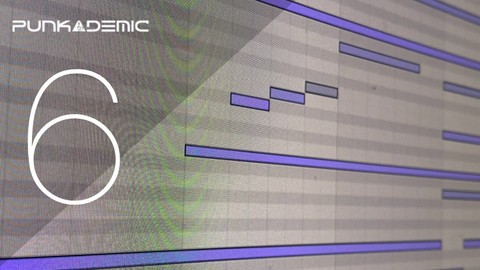Music Theory for Electronic Musicians 6: Advanced Harmony
What you’ll learn
- Craft sophisticated harmonies using 9ths, 11ths, and 13ths – the spices that make modern tracks pop
- Master an encyclopedia of “weird chords” from the Hendrix chord to the “nu-disco special”
- Understand when and why to use complex harmony in electronic music production
- Learn voice leading and chord voicing techniques that add professional polish
- Apply advanced harmony concepts to create distinctive, emotion-rich productions
Welcome to Advanced Harmony, the sixth installment in the Music Theory for Electronic Musicians series. If you’ve mastered the fundamentals from Parts 1-5, you’re ready to expand your harmonic spice rack with the sophisticated flavors that make contemporary electronic music truly distinctive.
Think of this course as your advanced cookbook for harmony. We’ll move beyond the salt-and-pepper basics of major and minor chords into a rich world of extended harmonies, exploring how modern producers use 9ths, 11ths, and 13ths to create those ear-catching moments in nu-disco, advanced EDM, and contemporary electronic genres.
As the author of “Music Theory for Electronic Music Producers” and instructor to over 1 million students worldwide, I’ll guide you through:
A comprehensive encyclopedia of “weird chords” – from the iconic Hendrix chord to contemporary classics
Advanced voicing techniques that add sophistication to your productions
Practical applications of extended harmony in modern electronic genres
The “when and why” of complex harmony – understanding the emotional impact
Professional-level harmony techniques used in nu-disco and contemporary production
This course includes hands-on demonstrations in the MIDI grid, real-world musical examples, and practical applications for:
Extended chord vocabulary (9ths, 11ths, 13ths)
Voice leading and chord voicing
Tension and resolution in complex harmony
Creative chord substitutions
Advanced harmonic progressions
Each concept is demonstrated in context, showing you exactly how these advanced techniques are used in contemporary electronic music production.
Remember: Just as a chef needs to understand basic cooking before creating complex dishes, you’ll need the foundational knowledge from Parts 1-5 to fully benefit from these advanced concepts. This course builds directly on that knowledge to elevate your production skills to professional levels.
Join me for this deep dive into advanced harmony, and discover how to create those sophisticated, emotionally compelling moments that set professional productions apart.
Who this course is for:
- Graduates of Music Theory for Electronic Musicians Parts 1-5 ready to take their productions to the next level
- Anyone who’s mastered basic chords but finds themselves asking “why do some tracks sound so much richer?”
- Electronic producers looking to add sophisticated harmonic elements to their tracks
- Nu-disco, EDM, and electronic producers seeking that professional polish in their harmonies
- Musicians who understand basic theory but want to explore the “jazz-like” harmony in modern electronic genres
User Reviews
Be the first to review “Music Theory for Electronic Musicians 6: Advanced Harmony”
You must be logged in to post a review.







There are no reviews yet.